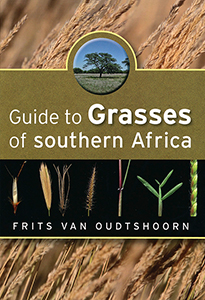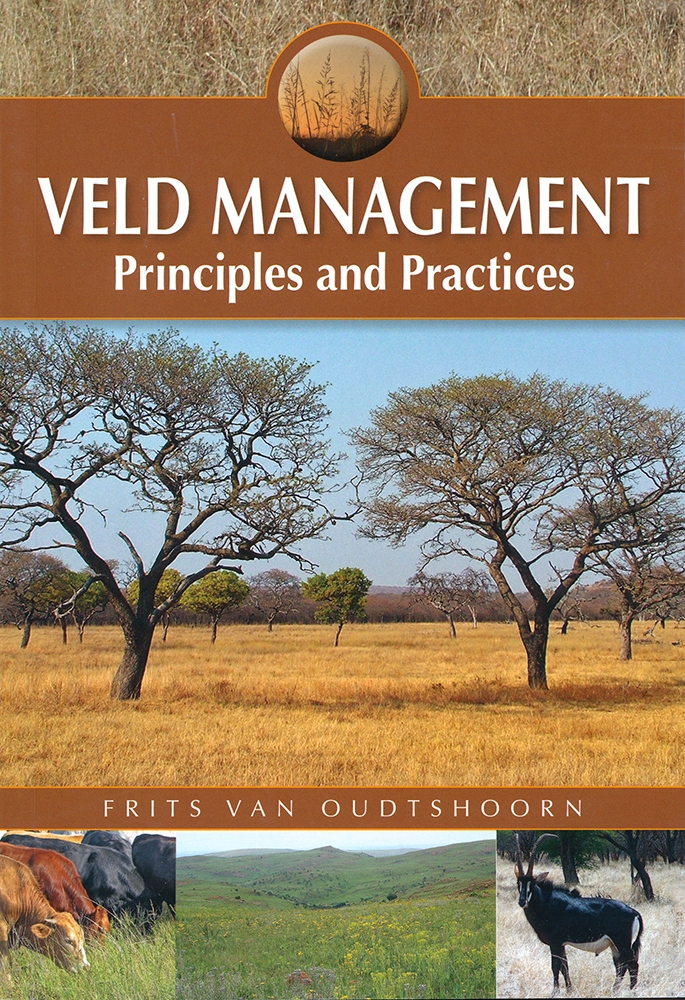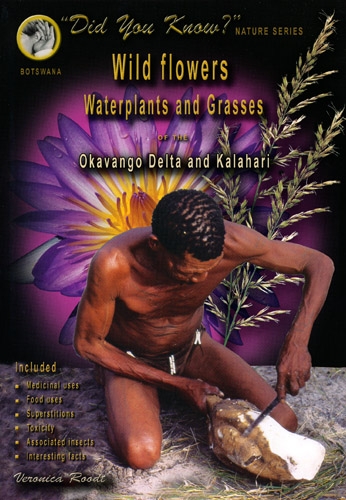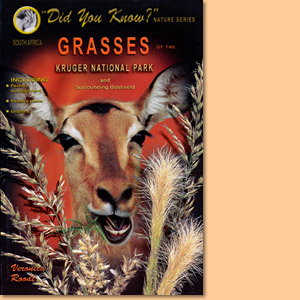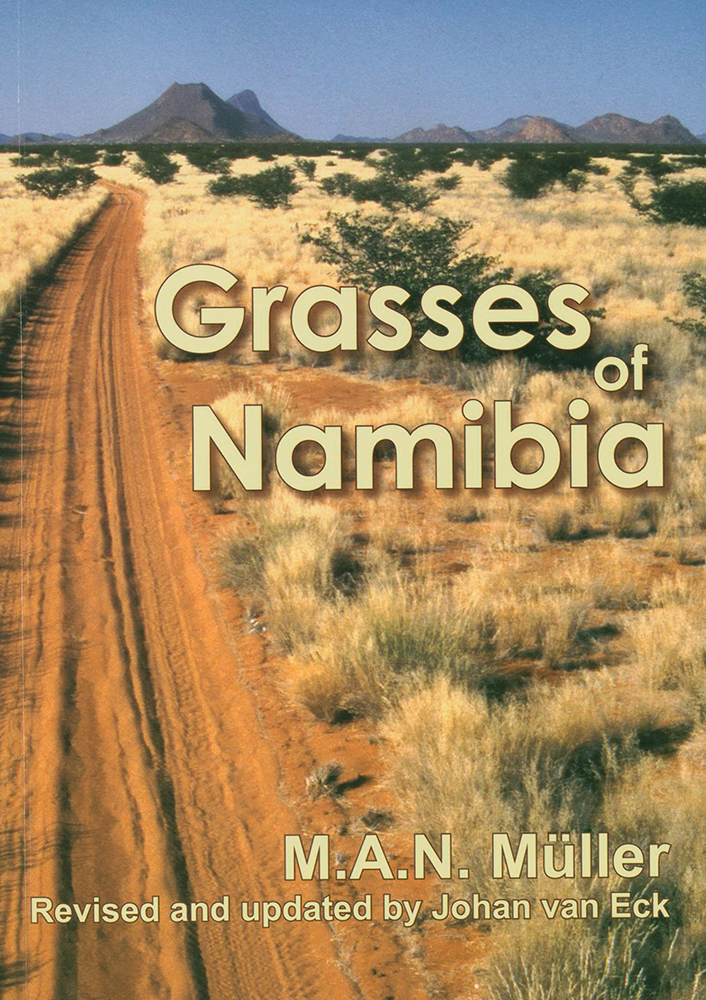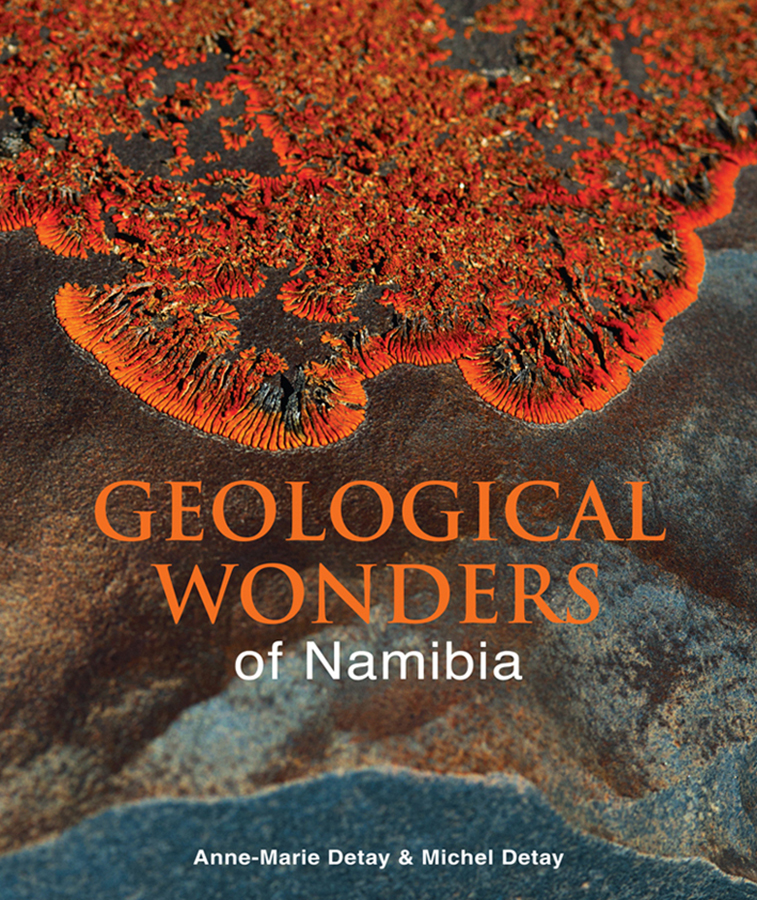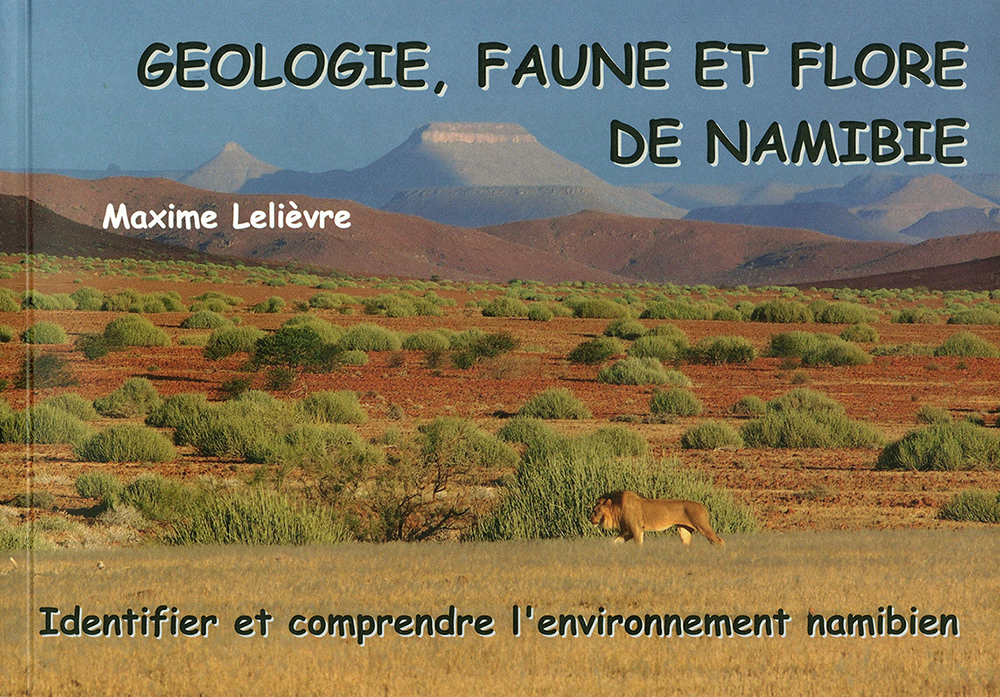Guide to Grasses of southern Africa, by Frits van Oudtshoorn
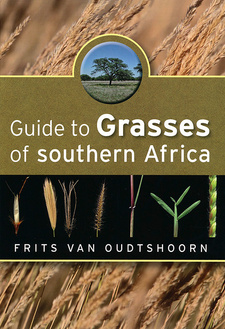
Guide to Grasses of southern Africa, by Frits van Oudtshoorn. Briza Publications. Pretoria, South Africa 2012. ISBN 9781920217358 / ISBN 978-1-920217-35-8
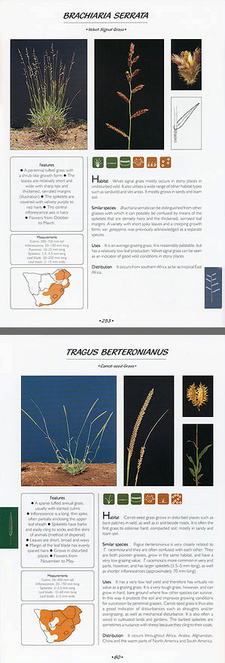
This is an excerpt from the book: Guide to Grasses of southern Africa, by Frits van Oudtshoorn. ISBN 9781920217358 / ISBN 978-1-920217-35-8
The purpose of Frits van Oudtshoorn's Guide to Grasses of southern Africa is to educate people on an important subject with the aid of a practical book. What is the important subject? The important subject is grasses, naturally, but particularly the important role that they play in nature and in our lives.
Grasses are important in three respects, they are an important source of food for man; they play an important ecological role in nature; and they are good protectors of the soil. Grasses were the first plants to be planted by man for food. Most animals are either directly or indirectly dependent on grasses. It has been said that should all the plants of the earth disappear, and only grasses remain, man would still be able to survive. Who will find this book useful? As grasses play such an important role in nature, this book will be of interest to everyone who is interested in nature. It has been compiled with the lay person in mind, but is comprehensive enough to also provide the specialist with sufficient information. It is a practical guide to use in the veld. The most important readers will probably be farmers, nature conservationists and students. My hope is that as many land users as possible will use this book to get to know the important grasses in their environment, and to understand the ecological role that they play. The long term use of this book will give the reader a better understanding of the dynamics and ecological processes of the veld. Why is it a practical book? This book is practical and easy to use, mainly for five reasons: it provides colour photographs of each species; makes use of a key to identification; discusses the diagnostic features of each grass; discusses other related grasses (and how to distinguish between them); and includes distribution maps of each species in Southern Africa. The photographs make the identification of grasses, which is often a difficult task, considerably easier. Photographs do not only show colour, but also the growth form (habitat) of the grass, which is difficult to illustrate with black and white line drawings. The identification key is based on the shape of the inflorescence. This is a method commonly used in other grass books. An attempt has been made, for the first time, to arrange the grasses according to the development of their inflorescences (ranging, for example, from an open panicle to a contracted panicle and finally to a spike-like panicle). Each species description starts with the diagnostic features of the species. Some of these are illustrated by means of line sketches. The identification process is also made easier with the aid of a section (Similar species) that explains how a particular grass can be distinguished from other closely related grasses. Distribution maps, which should be the first aid when identifying grasses, are included for each species. These maps cover Southern Africa (south of the Zambezi and Kunene rivers). Part I contains fully illustrated introductory chapters to various fields of study in which grasses play a direct or indirect role. As each of these chapters represents a fully-fledged field of study on its own, only basic information and principles could be discussed. Further reading provides information on books that can be consulted to find out more about these fields of study. [...]
This is an excerpt from the book: Guide to Grasses of southern Africa, by Frits van Oudtshoorn.
Title: Guide to Grasses of southern Africa
Author: Frits van Oudtshoorn
Publisher: Briza Publications
Pretoria, South Africa 2012
ISBN 9781920217358 / ISBN 978-1-920217-35-8
Softcover, 17 x 24 cm, 288 pages, 1000 colour photographs, distribution maps
van Oudtshoorn, Frits im Namibiana-Buchangebot
Guide to Grasses of southern Africa
This is the most comprehensive colour identification guide to the common grasses of southern Africa.
Veld Management: Principles and Practices
Veld Management, Principles and Practices supports land users professionaly managing the veld under their care.
Weitere Buchempfehlungen
Wild flowers, waterplants and grasses of the Okavango Delta and Kalahari
Includes all the common herbaceous (nonwoody) plants, wild flowers, waterplants and grasses of the Okavango Delta, Chobe, Makgadikgadi pans and the Kalahari.
Grasses of the Kruger National Park and surrounding Bushveld
Expert Veronica Roodt introduces grasses of the Kruger National Park and the surrounding Bushveld.
Grasses of Namibia
This is the updated and revised edition of the unique guide to grasses of Namibia that, first published in 1984, describes all species of grasses to be found in Namibia.
Geological Wonders of Namibia
Geological Wonders of Namibia is an informative portrayal of the key highlights of Namibia's landscapes and landforms.
Understanding Policy Domains their Salient Forces and Organisational Challenges
Understanding Policy Domains, their Salient Forces, and Organisational Challenges examines the complexity of policy making processes within the context of human action.
Géologie, faune et flore de Namibie
Geologie, Faune et Flore de Namibie: Identifier et comprendre l'environnement namibien avec 22 site géologiques, 95 animaux et 38 plantes.

